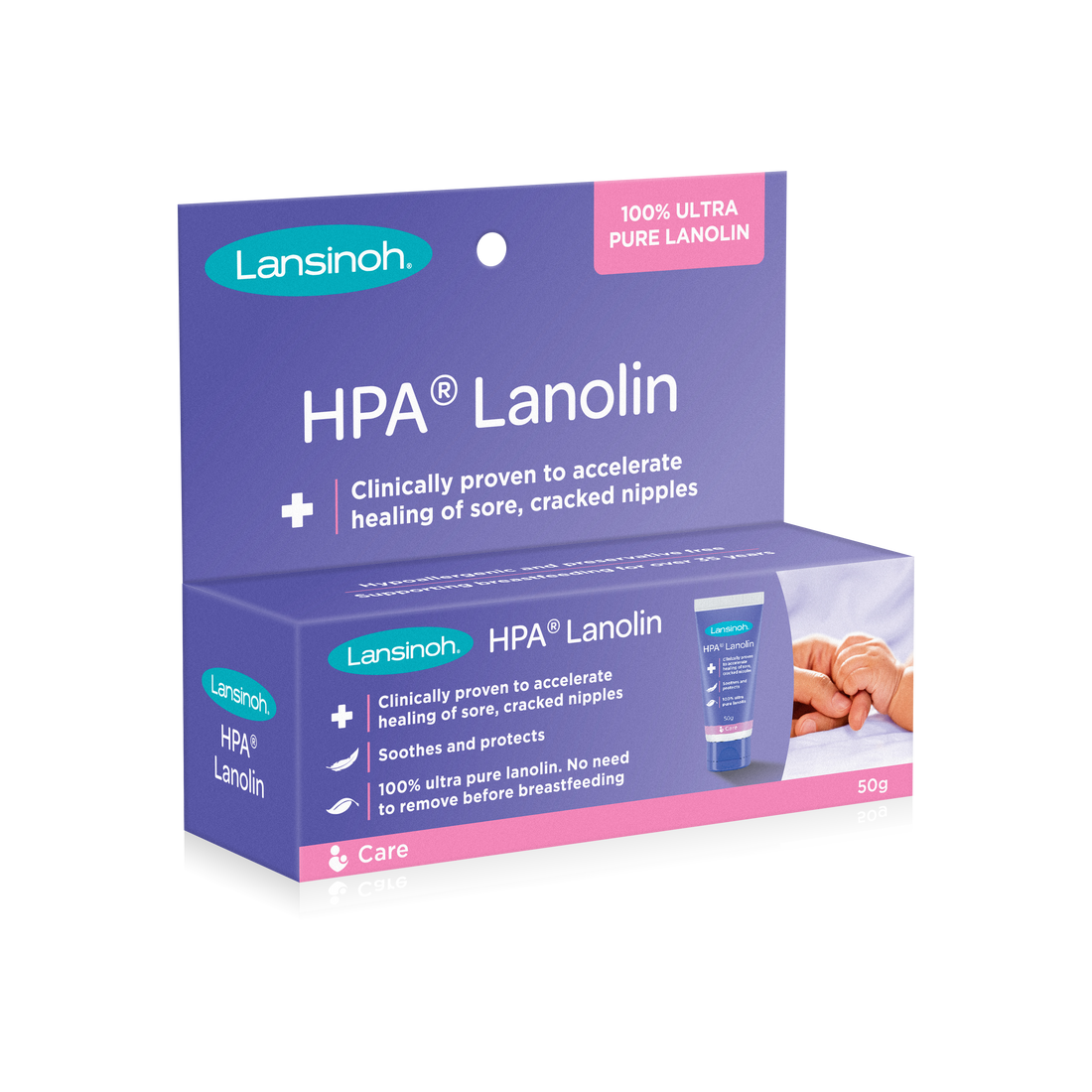While breastfeeding can be one of the most special and rewarding experiences for a mother, it can also be challenging at times, especially in the early days. Some women may experience one or more challenges, but others won’t struggle at all.
Many mothers report nipples to be sore and tender at the start. Don’t panic if this happens to you! It is quite a common challenge that mums face, with 80-95% of mums experiencing some degree of nipple soreness in the early weeks, especially as the baby first attaches to the breast for a feed.
Beyond the initial tenderness, the most common cause of sore or damaged nipples is poor positioning and attachment. This can happen when the baby doesn’t always take a big mouthful of breast. Baby taking a big mouthful of breast is essential in establishing breastfeeding. If you are struggling, it is recommended to seek out the support of your midwife, child health nurse or lactation consultant. You can also view some different breastfeeding positions to try, which may be helpful.
In the meantime, Lansinoh® HPA® Lanolin can soothe, heal and protect sore and cracked nipples. Lansinoh® HPA® Lanolin is clinically proven to accelerate healing1 and is so pure that there is no need to remove before feeding. The all-natural product contains only 100% ultra-pure lanolin – no additives or preservatives.
Tips to help sore nipples heal:
- Check positioning and attachment. Your baby should take a big mouthful of breast, with the baby’s tongue under your nipple
- Feeding frequently can help. A new baby needs to feed 8-12 times in a 24 hour period
- Feed on the least sore side first, then, when the milk is flowing, switch breasts
- Avoid breast pads with plastic backing, which may keep nipples wet
- Products that need to be removed before breastfeeding should be avoided as extra rubbing may irritate nipple soreness
Other causes of sore nipples in the early days:
Engorgement – It is normal for your breasts to become larger, heavier and a little tender when they begin to make more milk. Occasionally this fullness can lead to engorgement, when the breasts feel very hard and painful and the nipple may temporarily flatten. If your baby cannot get an adequate mouthful of breast, it may make it difficult to get a good attachment. It can help to express a little milk before feeding to soften the breast and nipple area, and to feed at least every two hours, with a longer gap at night.
Tongue Tie – Tongue-ties can be treated, and it is advisable to consult a health professional.
Breaking Suction – Removing your baby from your breast without breaking the suction may increase the likelihood of getting sore nipples. If you need to take your baby off the breast, break the suction first by putting your finger between his or her gums.
If you are struggling with breastfeeding, do get help from a breastfeeding counsellor or lactation consultant. The sooner you get help, the better. Useful organisations include:
- Australian Breastfeeding Association – they offer a Breastfeeding Helpline on 1800 686 268
- Lactation Consultants of Australia and New Zealand – use their website to find a private practice International Board Certified Lactation Consultant in your area
- You may also be able to see a lactation consultant through the hospital where you gave birth, or through your local Child Health service
1Abou-Dakn M, et al., Positive Effect of HPA Lanolin versus Expressed Breastmilk on Painful and Damaged Nipples during Lactation, Skin Pharmacol Physiol 2011:24:27-35
Always read the label and follow the instructions for use.

